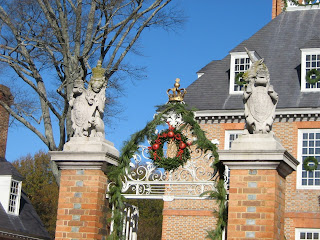
Susan reporting:
William Hickey (1749-1830) was a successful English-Irish lawyer who would be virtually unknown today except that he wrote one of the most entertaining and readable
Memoirs of the 19th c. The memoirs begin when Hickey is an affluent and rascally young gentleman in London, a constant source of despair to his parents, and continue through his experiences in India. As male memoirs go, they're particularly unusual because Hickey never spares himself in the telling. He doesn't try to "improve" the past, or make himself out to be a great man in any way, but remains as cheerfully honest about is failings and misadventures as he is about his successes. This passage takes place when he was only 13, and home from school for the Christmas holidays.
My first venereal attempt was made on a dark night in St. James's Park, upon the grass, about Christmas of the year 1762... and grievously disappointed I was. I cannot describe my feelings upon the occasion; but undoubtedly they were not altogether pleasant. The same evening that this happened, I was to go home and sleep there, my mother having some friends to sup with her, one of whom was desirous of seeing me. From the park therefore I went to [our house in] St. Albans Street, where in the drawing-room several ladies were assembled, amongst them Mrs. Cholmondeley, wife of the Honourable & Reverend Mr. Cholmondeley, son of Lord Malpas, and grandson of Lord Cholmondeley.
Upon my entering the apartment, Mrs. Cholmondeley immediately laid hold of my arm and, drawing me towards her, began questioning me about [my schooling at] Westminster and what books I was reading; after which, with peculiar archness in her manner, she asked,
"And what is the school paved with, stones or brick?"
To which I replied: "Neither, Madam, it has a boarded floor."
"Aye, indeed (rejoined she) I should have thought from your knees, it was of grass."
This naturally attracted my eyes to the knees of my breeches, which unfortunately were of leather and new, and to my confusion, I saw them both strongly marked with green.
I knew not what to say, but most cordially wished my interrogator at the Devil. After some very lame attempts to account for the appearance of my breeches, I made a precipitate retreat for the kitchen, to...a manservant...who was my confidant...[and] I related what had just passed in the drawing-room. He was surprised by my unusual dullness, and asked me why I had not instantly said that, in my haste and eagerness to get home, running through the park I had fallen down and stained my knees. I wondered at my own stupidity....
Above: Portrait of William Hickey by Thomas Hickey, National Gallery of Ireland




 More holiday decorations from Colonial Williamsburg, ranging from the humble (apples, seed pods, and clam shells) to the grand (the royal lion and unicorn standing guard outside the gate to the Governor's Palace.) Many of the interpreters also look mighty festive; while no one is wearing plush Santa hats, there certainly are more scarlet waistcoats, breeches, and gowns than usual on Duke of Gloucester Street. I believe the gentleman on horseback, above, is Thomas Jefferson.
More holiday decorations from Colonial Williamsburg, ranging from the humble (apples, seed pods, and clam shells) to the grand (the royal lion and unicorn standing guard outside the gate to the Governor's Palace.) Many of the interpreters also look mighty festive; while no one is wearing plush Santa hats, there certainly are more scarlet waistcoats, breeches, and gowns than usual on Duke of Gloucester Street. I believe the gentleman on horseback, above, is Thomas Jefferson.























_1789-w.jpg)












.jpg)





